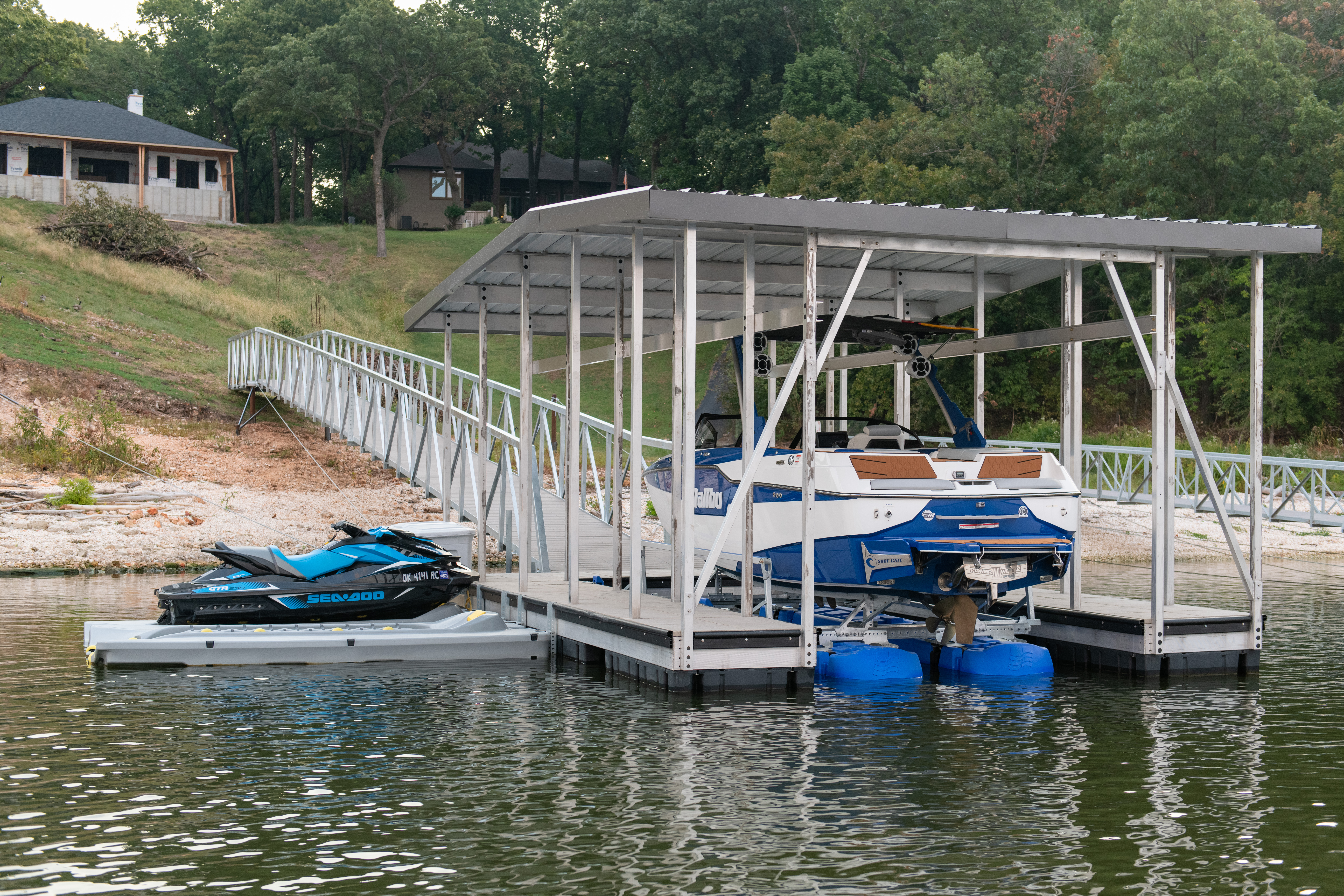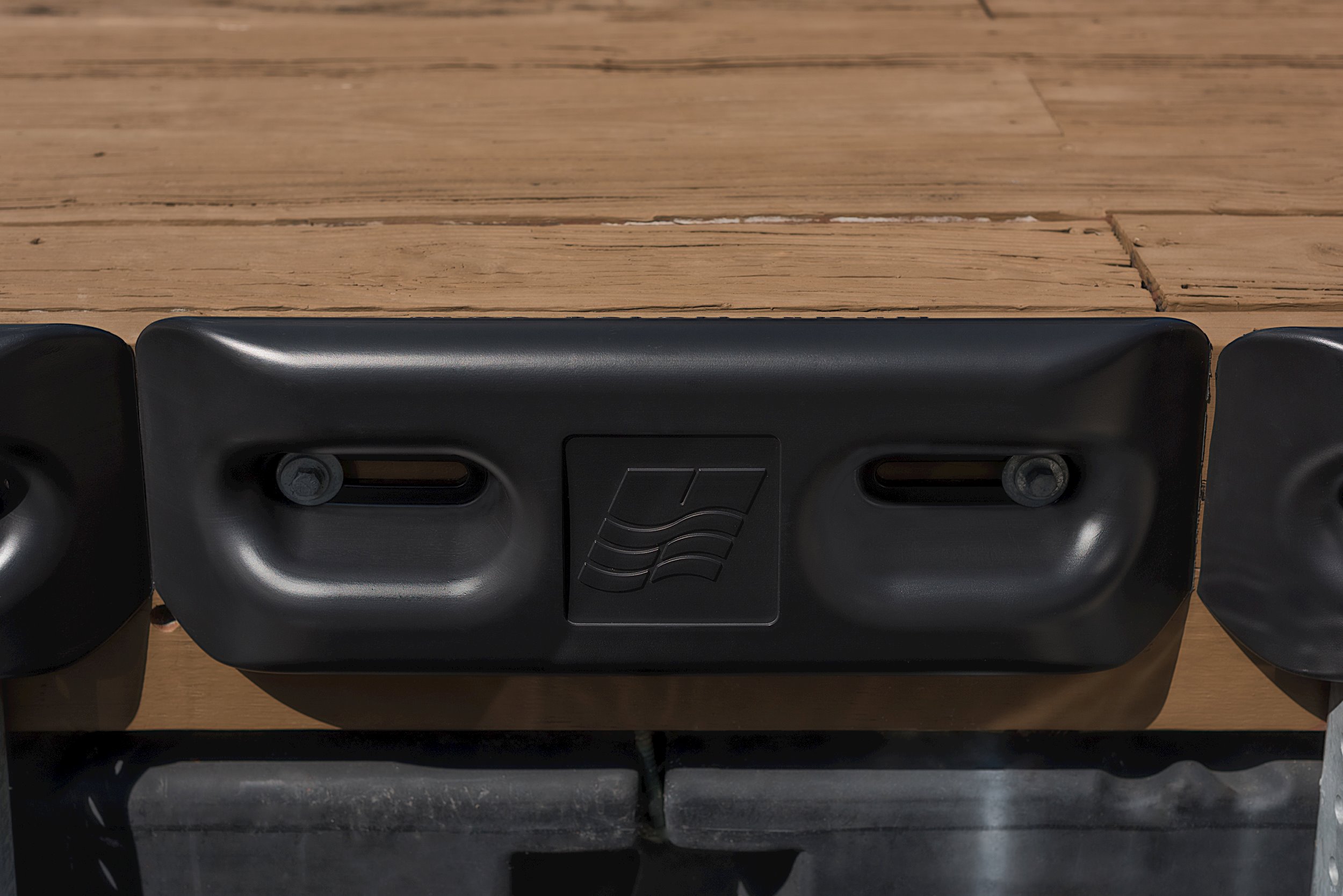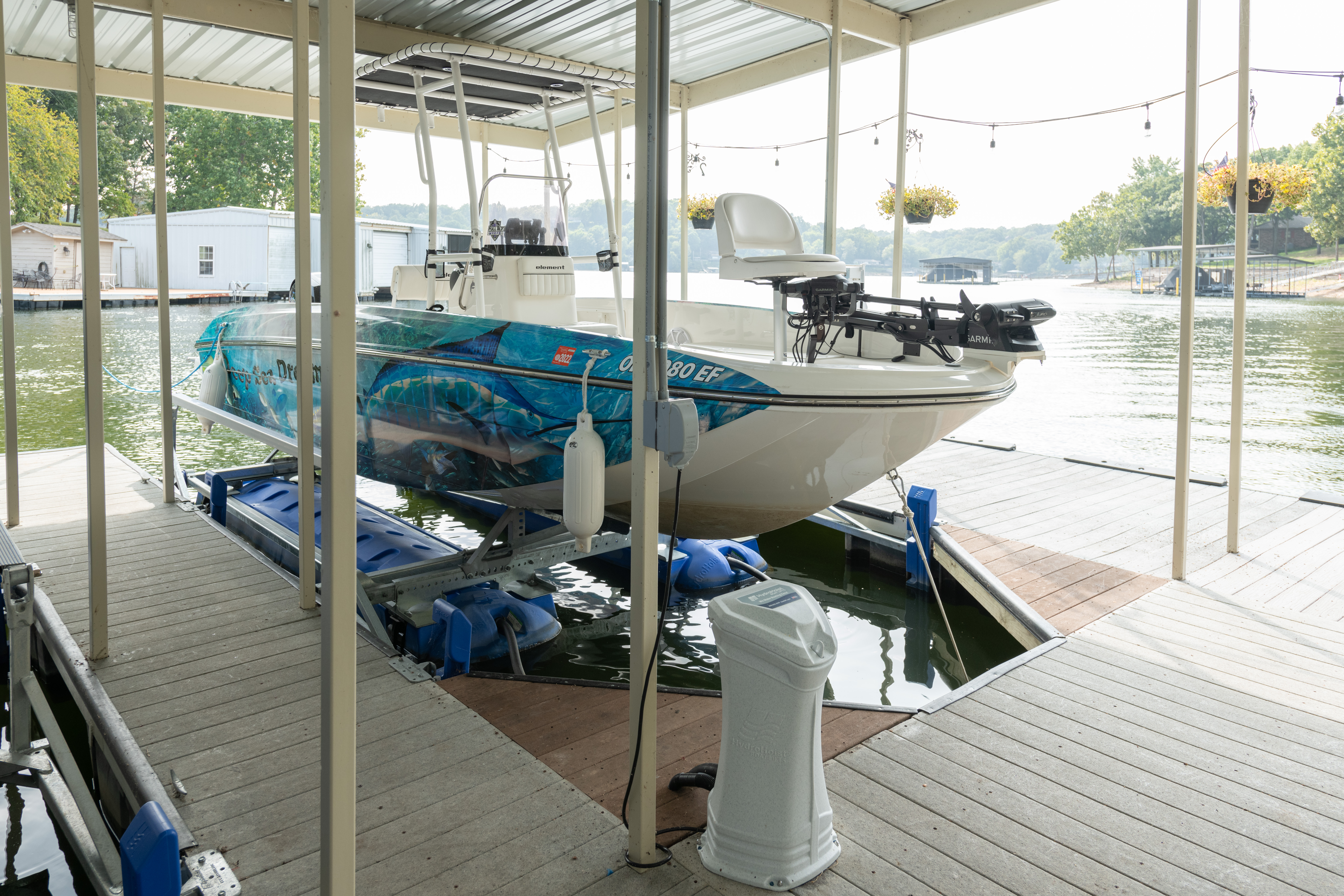Posted on May 24, 2021
HOW TO TIE A BOAT TO A DOCK
Written by HydroHoist Marketing
At HydroHoist, our boat lifts are designed to meet the dual purposes of boat owners who dock their boats in all types and depths of water. They combine the protection and security of a dry dock with the ease and convenience of in-water storage. While our boat lifts make boating easier, they may also require basic boating knowledge like tying your boat to the dock and knowing which type of knot to use.
To add an extra layer of security to your boat or personal watercraft (PWC) and its accompanying lift, we recommend that after owners dock their boats, they then tie their boats to the dock.
This is handy just in case the lift was to lower itself unexpectedly.
You might also need to know a variety of knotting techniques if your boat has sails.
When To Tie Your Boat or Personal Watercraft To Your Dock
Inclement weather – especially if your boat is regularly docked in a hurricane zone or particularly rough waters – might prompt you to tie your boat to your dock for an added layer of security, even when our boat lifts are in use.
You might also need to secure your boat to a piling or pole if you dock unexpectedly in the midst of a trip. In addition to tying your boat to the dock, you might need to tie your boat to your anchor or your anchor to a secure location. The ability to tie your boat up properly can also give you peace of mind and broaden the places where you can take your boat, where you can stop for fun and excursions, and make travel safer and more enjoyable for everyone.
Know The Different Types of Ropes All Boaters Should Have
A rose by any other name might smell the same, but different types of ropes have different pros and cons for boaters.
- Nylon – these ropes are widely preferred by the boating community. They are inexpensive and durable with enough elasticity to withstand the weight and motion of most boats. You can also purchase them in a variety of colors and lengths to make tying your boat to your dock easier than ever.
- Polypropylene – these ropes are usually the most cost-effective ones available. Their ability to float means they are easily visible in the water, but they tend not to be quite as durable as nylon. It’s typically bright yellow and may work well for PWC owners.
- Hemp – these ropes are inexpensive and offer little shock absorbency because they have little to no give or elasticity. They are all-natural and biodegradable but are not usually the first choice for boaters.
Make sure to stock your boat with a variety of ropes, know the features and benefits of each and be sure to carry a variety of lengths and a rope-cutting tool as needed. Once you have the right rope for you, keep reading to learn more about some of the knots you will need to tie your boat to your dock.
Four Maritime and Boating Knots You Should Know
Maritime knots are useful for more than securing your boat and lift to your dock. They can also help secure supplemental fuel and gear. To help you make the best choices in knots – and to ensure you know how to create each knot – we’ve created this handy little guide to four of the most often used boating knots.
Bowline Knot
Cleat Hitch Knot
Useful for pulling gear or anchoring a line, a cleat hitch knot is formed by wrapping your rope around one end of a cleat and looping it under the other side in a modified figure-eight pattern. Once done, repeat in the opposite direction, then complete the knot with a small loop. Turn it upside down and pull taut. A finished cleat hitch knot is ideal for mooring your boat.
Figure-Eight Knot
Super simple and a cinch to do, a figure-eight knot is also called a stopper knot because it’s an easy way to stop a pulley or hoist from rolling. Start by making a loop in your rope, wrapping the lines, and pulling them taut. Make a point of implementing this simple knot for long-term use because it can be challenging to undo. The benefit to that, of course, is that it makes a very secure knot.
Pile Hitch Knot
As its name implies, the pile hitch knot is great for securing your boat to a piling when needed. It’s easy to do by simply doubling your rope, wrapping it around the piling, and looping it through. Pull it taut and you have a simple but effective knot. It also has the advantage of being easy to remove because you simply pull it over the head of the piling.
These are only a few of the many knots you can use to secure your boat and its equipment. As a boat owner – or frequent boat guest – knowing a few simple knotting techniques can be beneficial in more ways than one.
Browse our full line of boat lifts at HydroHoist to learn more about choosing the right lift for your boat or personal watercraft.
Our website, blog, and FAQ section provide detailed information on our lifts, how to choose the best one, how to set up initial installation, and how to use them. In addition, because stellar customer service is one of our hallmarks, we make sure you are fully up to speed on your boat lift and have access to our customer care team for any follow-up questions or concerns.
Finally, every boat lift and accessory we offer lives up to our determination to make boating safer, more secure, and more fun!



